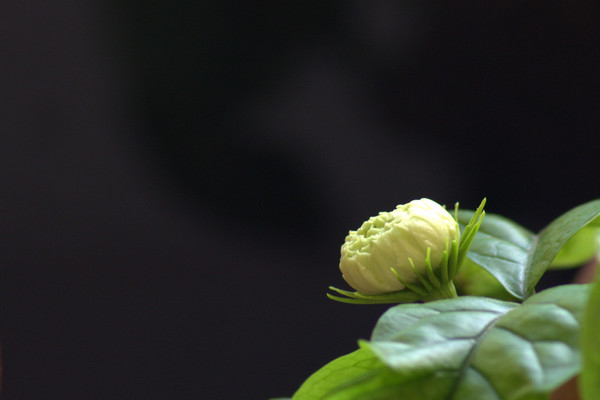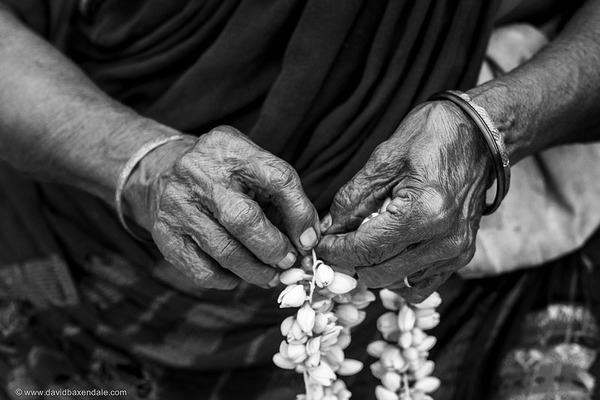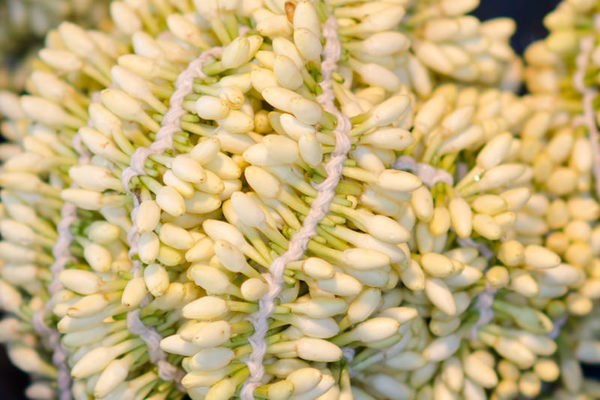19/04/2017
The jasmines have started to declare their presence everywhere; some loudly and others quietly but incisively. The loud ones look like tacky women, their straggling vines devoid of leaves but clothed in those white blooms, spilling out their heavenly scent. The quiet ones beckon you to seek them out. You know they are there; their unmistakable smell wafts gently toward you, and you have to follow that path up with your nose to locate their sparse blooms amidst the luxuriant dark green foliage.
My adolescent memories are tagged with the blooming of jasmines at several junctures. For one thing, my home garden those days was a veritable collection of jasmine varieties...kudamulla, eerkkilmulla, chendumulla, nityakalyanimulla, Alappuzhamulla to Englishmulla.
We had a huge bush of the ordinary thick, five petalled variety called "kudamulla" or "kurumozhi." It was entwined lovingly around its traditional partner, the "kilimaram." When we pruned, we had to prune both the vine and the standard, for the "kilimaram" was a rather selfish, morose lover who didn’t want to share the charms of his lady love, the vine, with the mortals. Pruning was done at the heights of summer and was rather severe, leaving the vine brutally dismembered. But the light summer showers could then trickle down to her very soul and bring her to raptures, which she promptly expressed by bursting out with those light green sprouts protecting within their midst her bounty, the flower buds.
Once the buds started showing their round greenish-white heads out, I would’ve my most enjoyable past time of those evenings, picking them out. Picking, you would all imagine, is an easy task, but is in practice an acquired skill which requires quite a bit of guidance in the beginning. I had my cousin who taught me patiently to differentiate between the next day's buds called "karimottu" and the mature ones; prominent maturity indices being their lighter greenish tinge and the longer bud stalk. So profuse was its flowering that the picking of buds from this bush took nearly an hour! I always had infinite patience for this activity that as I recall now was also infinitely relaxing. I was also rather greedy those days, I'll admit. It was as if there was a competition between me and the "kilimaram"- a sort of game, in which I was determined to rob him of all the blossoms his love presented, and he, on the other, hand taunted me by hiding a few beneath his foliage or on his rather remote branch out of my reach. I even used props like the kitchen stool and poles to bend down the distant blooming vines to my reach.
The picking had to be completed before 6 p.m., to leave ample time for stringing the buds. Those who have stringed jasmines will understand why. Once they bloom, it’s very difficult to slip the string quickly around the head. The string will get caught by the unfurled petals and the going gets slow, which inversely means that you'll have more open flowers than flower buds at hand that resist stringing.
Stringing of buds is an art that I learned from my paternal grandmother. The strings used for those perfect garlands came off the banana stem - the dry margins were torn off the plant, immersed in water to soften them, and then shredded lengthwise to make as thin strings as you could. The strings had to be pliable for twining around the buds. The way you hold the string between your fingers, the support you give to anchor the bud in place before knotting, the exact amount of pressure that is to be applied on the knot around the bud, the space adjusted between the paired buds on the string... are all trivial but extremely pertinent aspects that go into the making of an excellent, symmetric, long holding garland. I'll say it took me many hours of patient practice and several distorted strings before I could master the art. Now I am as experienced and fast as your next florist in making a perfect jasmine garland.
Oh! The innumerable garlands that were weaved and their many uses...mostly they adorned the pictures in the "pooja room" and photos of the deceased ancestors, one was send each day to the presiding deity in the nearby "kavu," one in every bedroom for their all-pervading scent to spill out at night. And of course there was a strand in every female hairdo: separate ones for day and night! A few loosely rolled strands would be sprinkled with some water and wrapped in banana leaves to be placed near an open window at night for the cool night breeze to help them preserve their freshness for the next day's use. I used to walk around with heavy coils of jasmine strands in my hair at all times. The blooming always coincided with the summer vacations and being let loose from the strict school regimen made it possible to revel in the delight these blooms offered. Their scent always colors my memories of summer vacations and the numerous temple festivals that I was eager to attend. It felt wonderful to be in long skirts, braid your hair and wear jasmine strands artistically upon your hair with a few loose ends always caressing your nape and shoulders to emit their delicious scent to savor with each moment. I felt beautiful!
The passage of years has not diminished the allure these blooms hold for me. But I am now a bit choosy as to when and how I'll wear them. I restrict their use to weddings and religious occasions when I just indulge wildly, breaking loose from my self-imposed abstinence. You may see me almost as heavily decked as the bride and not feeling self-conscious about it too! So, it may not be "modern" to wear flowers in your hair any longer, but come what may, I could never when the occasion arose, bow down to fashion and forgo an adornment possibility with my favorite blooms. I wouldn’t take offense at being labelled "ancient" along with them.
But I no longer own those jasmine bushes, as in the past, which has deprived me of the infinite pleasure of picking and stringing the buds. My home garden at present is not large enough to accommodate these bushes. I am equally adamant that I will not acquire the latest type called "kuttimulla" that can be grown in pots and that flower year round with constant pruning, controlled watering and manuring. Somehow I feel that it’s the seasonal nature of our ordinary jasmine that is captivating, on account of their superior scent and profuseness. Then there is also the long wait for its next blooming season, which makes one truly cherish the present one. It instills within a sense of pleasant anticipation that there will be a next time, yet again, for as long as our lives continue on, a staunch promise offered by Mother Nature.
Photo credit: shobanjayaraj via Foter.com / CC BY-NC-SA Ravages via Foter.com / CC BY-NC-SA SaurabhChatterjee via Foter.com / CC BY-NC-SA



